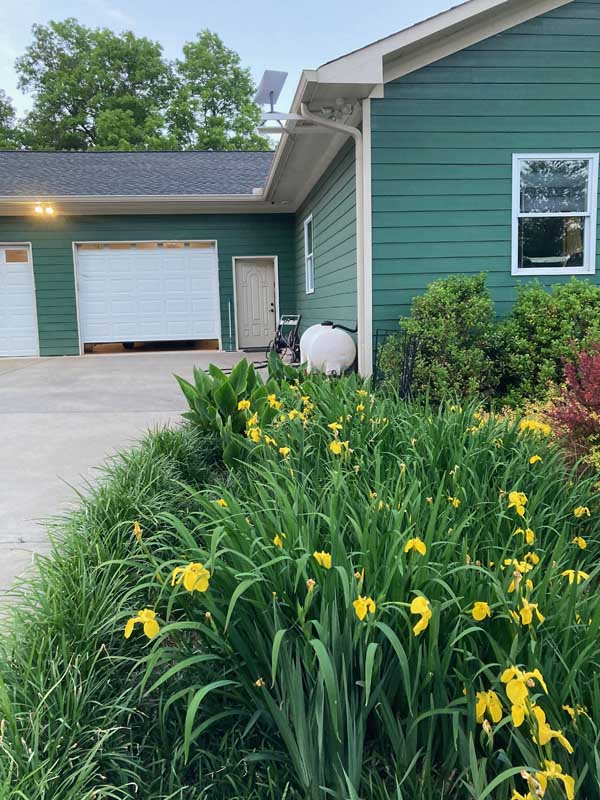We have not had decent internet access for the entire 17 years we have lived on the mountain here. We couldn’t get service over cable because the cable company has gone as far as they care to go, and begging (ours or others) hasn’t convinced them to go further. We couldn’t even get DSL because we are so far from the equipment the phone company needs, plus our telephone cables were laid in the ditch beside the road up the mountain, probably sometime just after the Civil War. We have used our cell service for access, which was sufficient for email and light browsing, but this strange new streaming thing has been beyond us.
That was our sad situation until a couple of days ago, when we got a nice package from Elon Musk. It included the rectangular dish you can see attached to our soffit in this photo.

Aren’t the flowers nice? They just bloomed.
A cable runs along the soffit to the corner at the garage, then up into the attic, down the length of the house, and into a wall, from which it sprouts into a closet in the little bedroom we call our office. There it is attached to a router, which provides us with wifi throughout the house. We can sign into the wifi with our phones, our iPads, our computers, and, most exciting of all, with our television. There the wide world of streaming opens up and allows us to pour thousands of hours of entertainment directly into our television. So far we have watched several episodes of Grace and Frankie. But I’m sure there will be lots of other things we can watch.
Oh, and we can finally update our phone operating system without waiting to connect to the wifi at a restaurant. I’m almost afraid to use it for fear that Elon Musk will change his mind.
The connection process was not a particular problem. It involved climbing into the attic, but the weather was mild when I did it. It involved drilling some holes through top plates and soffits, but it went reasonably well. It involved building a satellite antenna mount, which was pretty straightforward, although I don’t think my approach is a long-term solution.
The satellite system part was painless. I downloaded an app, which allowed me to find a good antenna location by aiming my phone’s camera up at the sky and panning around. The app evaluated any obstructions and decided that my intended location was good. Once I connected the antenna-router cable and plugged the system in, the antenna itself looked around and decided which direction to point. This is pretty typical of the approach that Elon Musk’s companies take: let the system do the hard work. And it worked, just like Tesla electric cars and SpaceX boosters work.
I am not a big fan of Elon Musk. I don’t like some of the things he says or some of the things he has done with his employees, but I have to give him credit, not only for kicking the established automotive and aerospace industries out of their ruts, but also for providing good, high-speed internet to people who otherwise can’t get it. Our speeds went from around 2 Mbps to 33 Mbps measured about ten seconds ago. I have seen more than 40 Mbps, but 33 is literally an order of magnitude better than what we had before. It’s not cheap. We paid $500 for the equipment and the monthly charge is $110, up 10 percent since we put our name on the waiting list last year. I hope this will allow us to get rid of our satellite TV service, which gives us hundreds of stations we don’t watch at a high price just so we can watch the dozen or so stations we do want to watch.
So, thank you Elon.